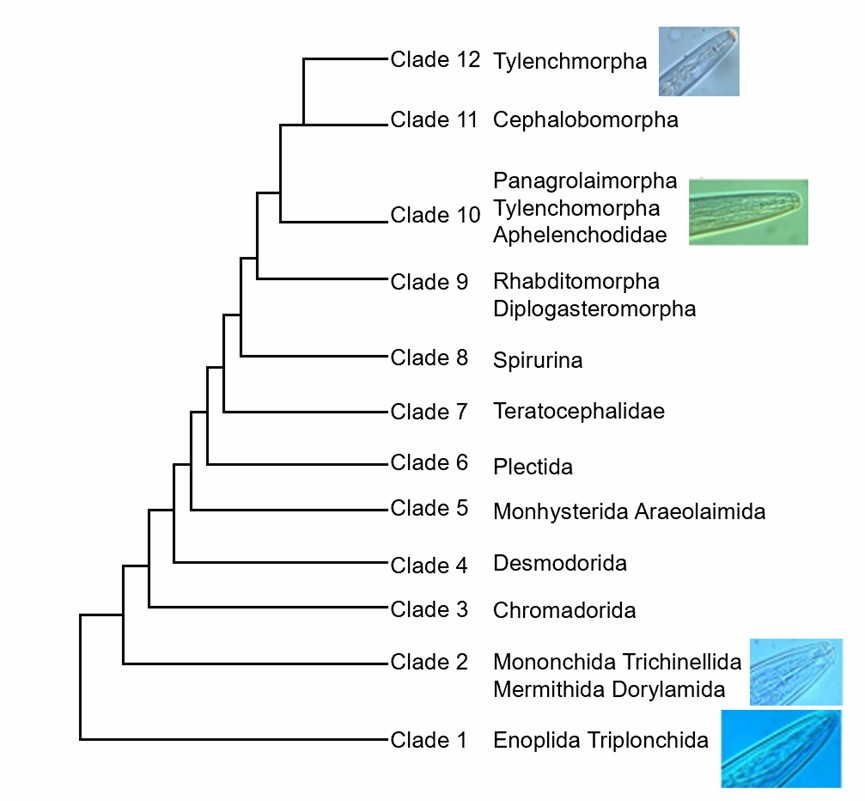To date, various plant nematodes have been described, and, in general, they are an important constraint on global food security. The annual economic losses caused by plant nematodes are large. However, this is likely a significant underestimate of the true figure, as many growers, especially in developing countries, are unaware of plant parasitic nematodes. These nematodes are usually small, soil-borne pathogens and the symptoms they cause are usually non-specific. Therefore, the identification of nematode species is of great significance for the study and control of plant nematode diseases.
Lifeasible is a leading provider of comprehensive, high-quality services for plant sciences. We provide identification of nematode species for research purposes to customers worldwide. We look forward to working with our customers to discover the secrets of life sciences.
 Fig.1 Interrelationships of nematode clades with phylogenetic positions.
Fig.1 Interrelationships of nematode clades with phylogenetic positions.
It is reported that a "Top 10" list of plant-parasitic nematodes was determined based on their scientific and economic importance.
| Ranking | Nematode species |
| 1 | Root-knot nematodes (Meloidogyne spp.) |
| 2 | Cyst nematodes (Heterodera and Globodera spp.) |
| 3 | Root lesion nematodes (Pratylenchus spp.) |
| 4 | The burrowing nematode Radopholus Similis |
| 5 | Ditylenchus Dipsaci |
| 6 | The pine wilt nematodeBursaphelenchus Xylophilus |
| 7 | The reniform nematode Rotylenchulus Reniformis |
| 8 | Xiphinema Index |
| 9 | Nacobbus Aberrans |
| 10 | Aphelenchoides Besseyi |
Lifeasible provides fast turnaround, high-quality services at competitive prices for customers worldwide. Our advanced technical platforms can help our clients solve the problems they may encounter in research based on years of experience. If you are interested in our services or have any questions, please feel free to contact us or make an online inquiry.
Lifeasible has established a one-stop service platform for plants. In addition to obtaining customized solutions for plant genetic engineering, customers can also conduct follow-up analysis and research on plants through our analysis platform. The analytical services we provide include but are not limited to the following:
STU-CRISPR System Improves Plant Genome Editing Efficiency
April 19, 2024
Application of Exosomes in Facial Beauty
April 12, 2024